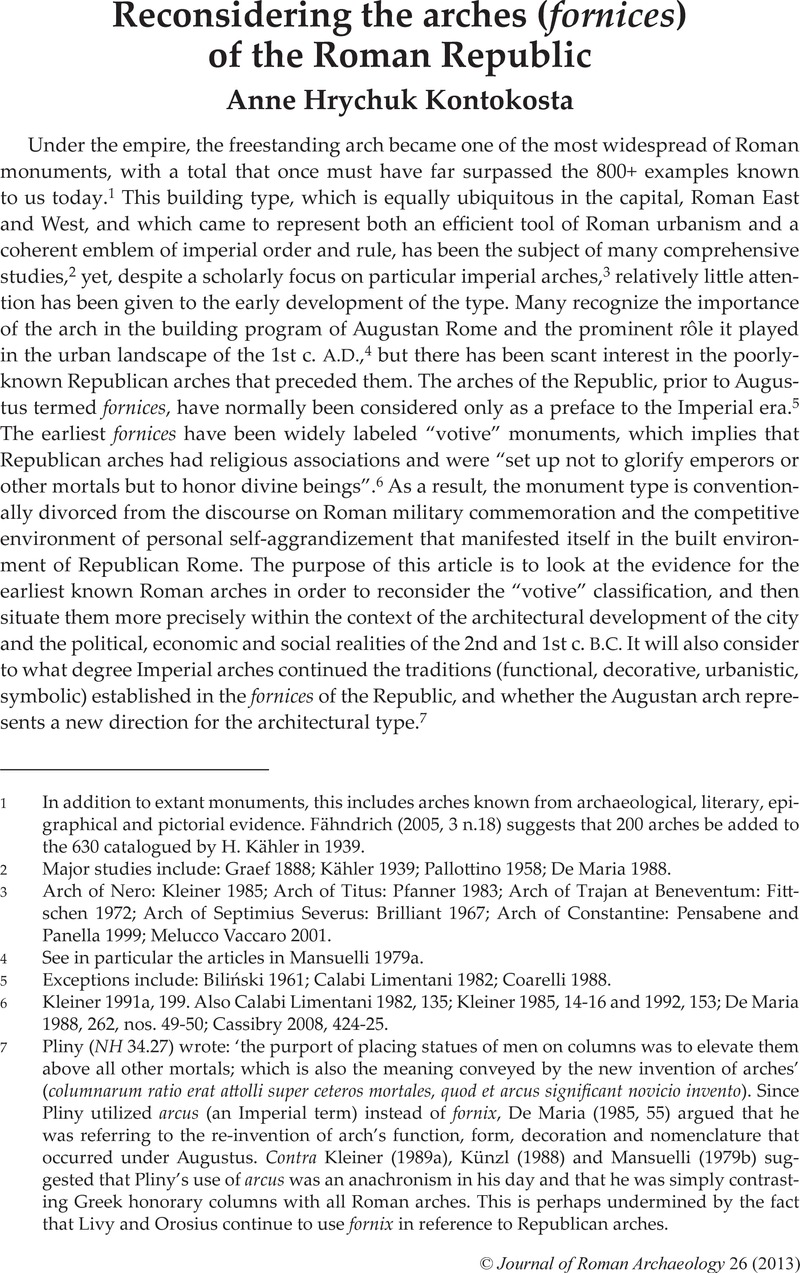Crossref Citations
This article has been cited by the following publications. This list is generated based on data provided by Crossref.
Davies, Penelope J.E.
2017.
A REPUBLICAN DILEMMA: CITY OR STATE? OR, THE CONCRETE REVOLUTION REVISITED.
Papers of the British School at Rome,
Vol. 85,
Issue. ,
p.
71.
Hölkeskamp, Karl-Joachim
2018.
Mythen, Monumente und die Multimedialität dermemoria: die ‚corporate identity‘ dergens Fabia.
Klio,
Vol. 100,
Issue. 3,
p.
709.
Ferrer-Maestro, Juanjo
Benedito-Nuez, Josep
and
Melchor-Monserrat, José Manuel
2020.
Saguntum: The Remains of an Honorary Arch and Urban Planning Outside the City Walls.
European Journal of Archaeology,
Vol. 23,
Issue. 1,
p.
43.


